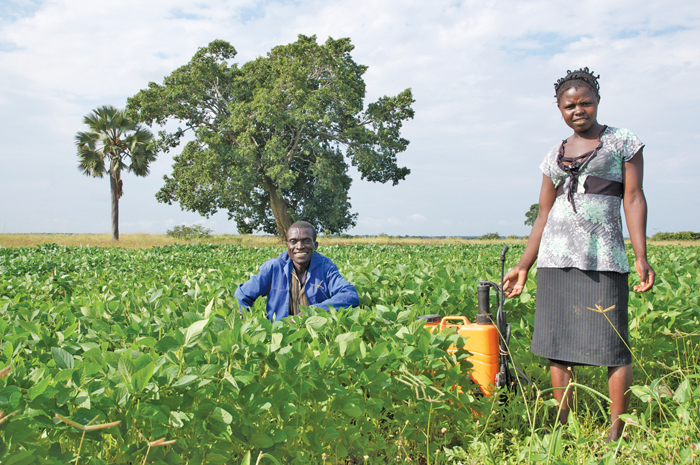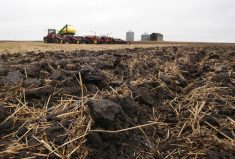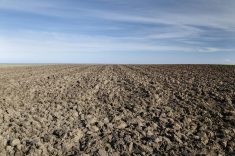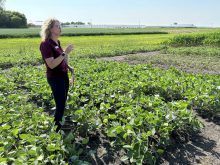It was the end of a very long day. We had travelled to remote areas on bad roads, walked barefoot across a flooding creek and hiked nearly an hour both ways to reach one of the three farmers we were scheduled to visit.
We were on the trail of conservation agriculture (CA) success stories, and the results we’d seen on this particular day were discouraging. Farmers in this area are clearly struggling with the system.
The only consolation was that some of the conventionally farmed fields looked worse.
Read Also

Precision 4R cuts farm greenhouse gas emissions
Lower areas in your field tend to emit more greenhouse gas, research shows that precision 4R nutrient stewardship practices can help mute the trend
The head of the local conservation support group insisted we look at one more field before we tried to beat the sunset back to town.
This was the man who had guided us all day, helped me stay upright wading the waist-high river, fed us a home-cooked meal of nsima (cornmeal), okra and eggs poached in tomato sauce, and who gave us a live chicken as a parting gift.
Who could say no?
He led us to his field of groundnuts (peanuts). Far from the weed-infested patches we’d looked at earlier, this field was virtually weed free. It actually looked pretty good.
There was just one problem. It had clearly been plowed, even though the farmer insisted otherwise.
Chris Woodring, a researcher who has been documenting the experiences of smallholder farmers practising CA in Africa, wasn’t fooled.
But neither was he critical.
“It always comes back to the weeds,” he said as the four-wheel-drive truck crawled and zigzagged over hardpan, ruts and washboard back to town.
Listening to farmers

Woodring has been monitoring the progression of reduced-tillage agriculture across Africa for the past seven years.
The Kentuckian, who is a small-scale farmer himself, was contracted by the Canadian Foodgrains Bank with support from the Howard G. Buffett Foundation to conduct detailed interviews with 50 smallholder farmers in five African countries.
The research is meant to give a voice to the people at the centre of an international debate over the best way to help them improve food security and release them from a life of grinding poverty. Necessary to that equation is halting the escalating decline of their soils.
Most of the world’s poorest people are smallholder farmers. They produce 80 per cent of the food consumed in Africa, but that said, much of the population in many African countries lives with chronic food insecurity.
Those who support CA, including Howard Buffett — the son of billionaire philanthropist Warren Buffett — believe it offers the best opportunity to stave off a looming environmental and human catastrophe in Africa.
There are literally thousands of projects on the continent promoting some form of conservation agriculture, many sponsored by church-based NGOs, but also by renowned research organizations such as the CGIAR-CIMMYT network. National governments have recently come on side, viewing CA as a key strategy for adapting to climate change.
Heretics
But in a 2009 study called “Conservation agriculture and smallholder farming in Africa: The heretic’s view,” four U.S.-based researchers challenged the notion that CA is a panacea for the problems of poor agricultural productivity and soil degradation in sub-Saharan Africa.
They said evidence supporting these campaigns is lacking and contradictory. As well, they argue the claims for the potential of the technology in Africa are based on the experience in the Americas, “where the effects of tillage were replaced by heavy dependence on herbicides and fertilizers.”
Yet, “it is actively promoted by international research and development organizations, with such strong advocacy that critical debate is stifled,” wrote Ken Gillera, Ernst Witterb, March Corbeelsb and Pablo Tittonella.
They cite lower yields, increased labour — especially for women — when herbicides are not used, and a lack of mulch because farmers prefer to feed it to livestock.
Controversial research published in the journal Nature in 2014 concluded that simply eliminating tillage from these systems might further reduce yields.
“The common assumption that no till is going to play a large role in the sustainable intensification of agriculture doesn’t necessarily hold true, according to our research findings,” said co-author Cameron Pittelkow of the University of California Davis.
These researchers concluded the only way CA works is when it is part of an integrated system that includes crop rotation and mulches that retain water, suppress weeds and improve soil quality. They also pointed out that some promised benefits such as increased fertility and weed control take years before they become noticeable.
Moist versus dry climates
The ensuing headlines were all about their finding of a six to nine per cent reduction in yields when the system is implemented in a moist climate. Less well publicized were their findings about the system’s performance in dry climates, such as in sub-Saharan Africa.
“When adopted in dry climates in combination with the other two principles, no-till farming performed significantly better than conventional tillage, likely due to the higher retention of soil moisture,” their paper said.
In January, the Journal of Sustainable Development published an article documenting high abandonment of CA once NGO support is withdrawn. But the article also noted that persistent adoption was more prevalent among the poor, which “supports claims that CA is a pro-poor technology.”
While Woodring’s research is unlikely to silence the critics, it solidly validates CA proponents.
“I think the potential for CA is somewhat greater than actual adoption,” he said as he wrapped up his five-country tour. “It is rising significantly, maybe not exponentially, but I think it is definitely on the rise in every country that I have visited.”
He found that it undeniably helps farmers who have been able to implement the combination of minimum tillage, crop rotation and use both organic and inorganic fertilizers.
Weed control challenges
However, weed control is the limiting factor for farmers trying to achieve CA on a commercial scale. The manual work involved in hoeing and mulching limits the area a family can manage.
As in North America, pesticides offer a less labour-intensive alternative to hand weeding, which makes them exceedingly popular with women, who do most of the weeding.
But many smallholders can’t afford to buy pesticides and if they do, they often don’t know how to use them safely. We watched as a young woman wearing no protection measured out the insect killer cypermethrin from a bottle of concentrate into a backpack sprayer. When she began spraying a field of cowpeas, most of her skin was exposed.
How well these products work depends on whether it rains too much or too little, too soon or too late. Farmers can lose their investment — and their crop. That spells hunger.
“The larger the scale they are adopting (pesticides), the bigger the risk is, because they have less chance of controlling those same weeds with physical means,” Woodring said.
Small farmers are also widely dispersed in remote communities that are difficult for extension support workers to reach.
For Woodring the issue isn’t whether CA is the right approach, it is how best to make it happen.
Africa’s soils are widely acknowledged as entering a state of crisis as growing population pressure results in more farmers trying to intensively farm increasingly smaller parcels.
“The more we work the soil conventionally, the worse our soils will become, the less productive they become and at the same time you can see the population explosion continuing.
“When you look at the sustainability of CA production as compared to conventional production there is just no comparison,” Woodring said. “The soil loss under conventional agriculture is massive. There is between 30 tonnes to 60 tonnes lost per hectare per year in typical situations around the world.”
Under conservation agriculture that loss is reduced to less than two tonnes per hectare. “So transition to CA is the only way forward that I’ve seen on the ground that really makes such a huge difference,” Woodring said.
Manitoba Co-operator editor Laura Rance is on secondment to the Canadian Foodgrains Bank to write about agriculture and development in Africa.




















